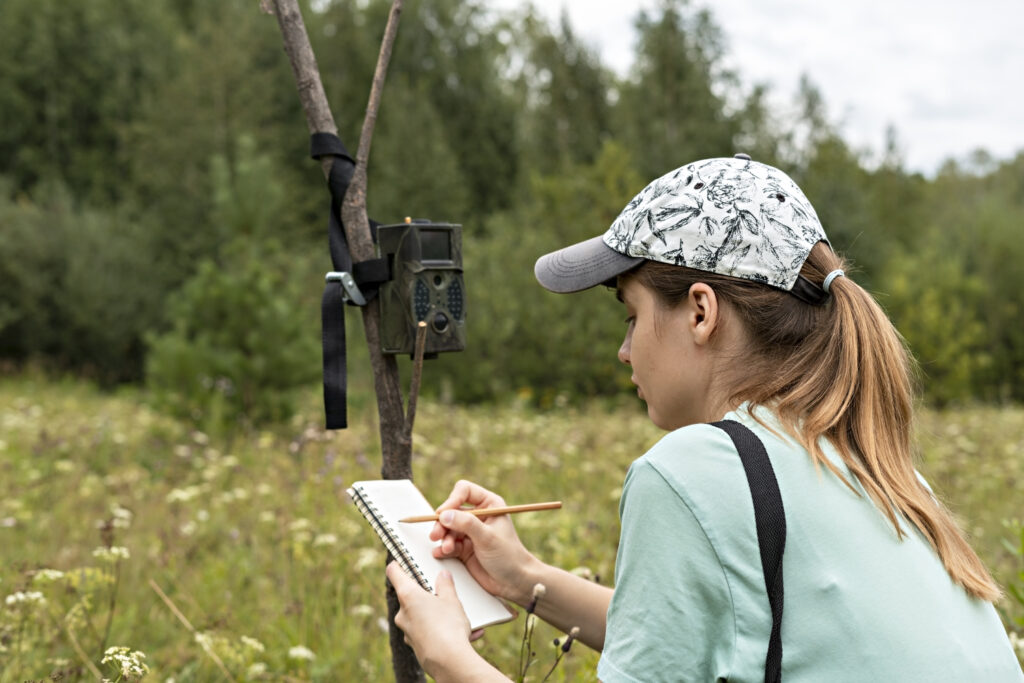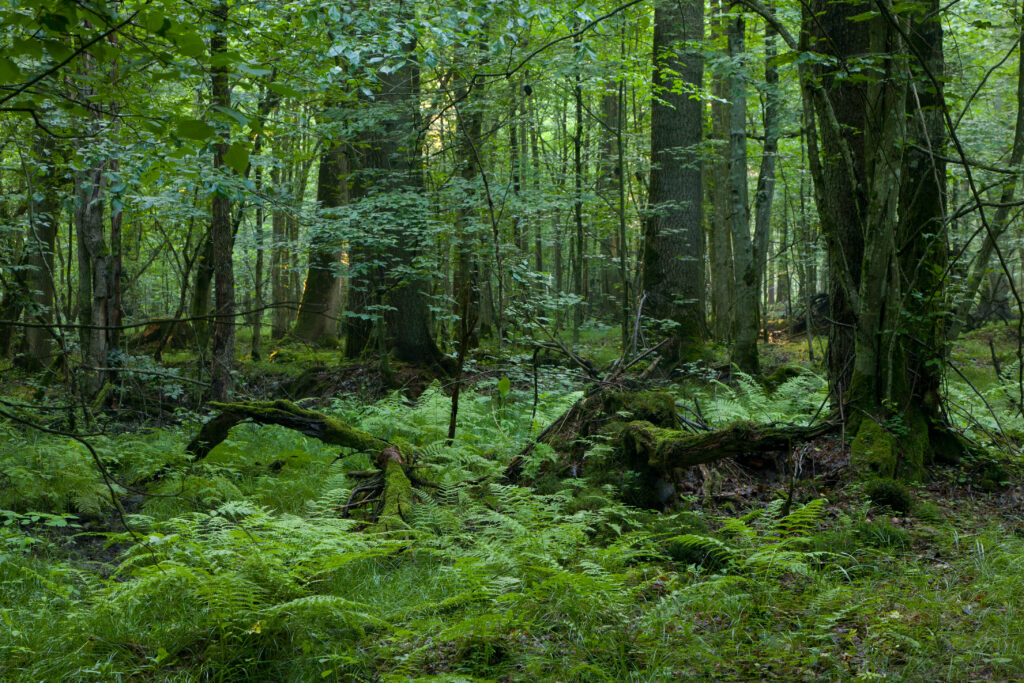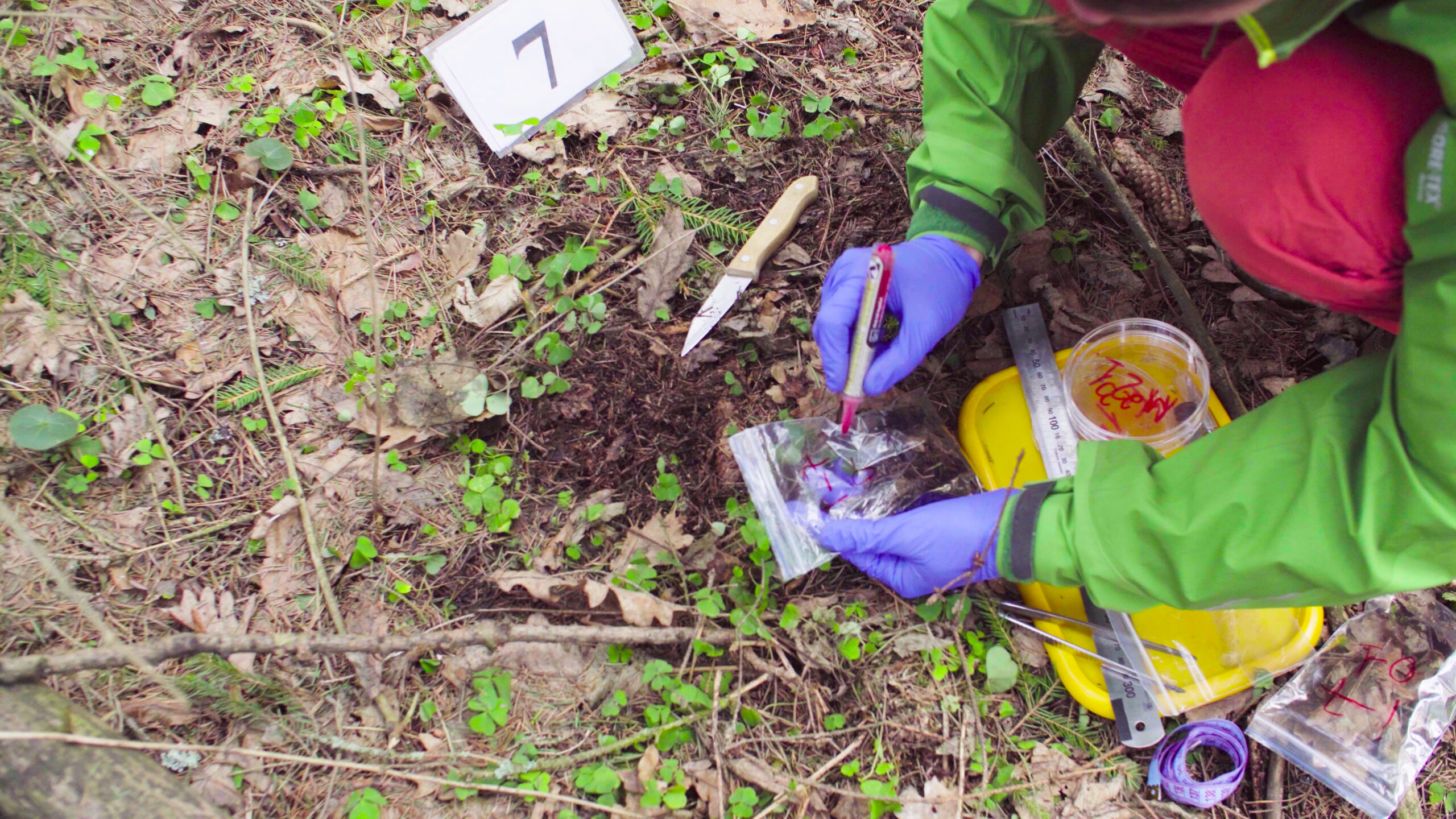Bigfoot, also known as Sasquatch, is a legendary ape-like creature said to inhabit forests, mainly in the Pacific Northwest region of North America.
The creature is typically described as being tall, muscular, and covered in hair, with a distinctive odor. According to legend, Bigfoot is a reclusive and elusive creature that is rarely seen by humans.
As such, there is a growing field of Bigfoot researchers.
The goal of Bigfoot research is to investigate the possibility of the creature’s existence and to gather evidence to support or refute the legend.
This research can take many forms, including fieldwork, interviews with witnesses, and analysis of physical evidence such as tracks, hair, and feces.
Some researchers believe that Bigfoot may be a previously undiscovered species of primate, while others believe that the legend is a modern-day myth with no basis in reality.
Despite the lack of concrete evidence, many people remain convinced that Bigfoot exists and continue to search for the creature in the hopes of finding definitive proof.
The methods of Bigfoot research

Tracking and fieldwork
Tracking and fieldwork are important techniques used by Bigfoot researchers to look for physical evidence of the creature.
These methods involve spending time in areas where Bigfoot is said to be found, looking for signs of the creature’s presence such as tracks, scat, and other physical evidence.
One of the key tools used in tracking and fieldwork is the ability to recognize and interpret animal tracks.
Bigfoot researchers study the tracks left by various animals, including bears and other primates, in order to identify any tracks that might be left by Bigfoot.
Researchers may also look for other physical evidence, such as broken branches or other signs of disturbance in the area, which could potentially be linked to Bigfoot.
In addition to tracking and looking for physical evidence, researchers may also use other techniques such as setting up cameras and audio recorders in areas where Bigfoot is said to be found.
These devices can be left unattended for long periods of time and may capture evidence of Bigfoot’s presence, such as photographs or audio recordings.
Tracking and fieldwork can be challenging and time-consuming, as researchers often have to cover large areas of wilderness in order to search for evidence.
Despite the difficulties, many researchers remain dedicated to searching for Bigfoot and continue to gather and analyze physical evidence in an effort to confirm the creature’s existence.
Interviews and witness reports
Gathering information from people who claim to have encountered Bigfoot is an important part of the research process for many Bigfoot researchers.
These encounters, also known as “sightings,” can provide valuable insights into the creature’s appearance, behavior, and habitat, and can help researchers build a better understanding of the legend.
There are a few different ways that researchers can gather information from people who claim to have encountered Bigfoot.
One common method is through interviews, in which researchers ask detailed questions about the encounter, including the location, time of day, and any other relevant details.
Researchers may also ask for photographs or other physical evidence, such as footprints or hair samples, that may be related to the encounter.
In addition to interviews, researchers may also use online databases and forums to collect and analyze reports of Bigfoot encounters.
These platforms can provide a wealth of information, including detailed accounts of encounters, photographs, and other evidence.
It is important to note that not all encounters with Bigfoot can be considered reliable or accurate.
Some people may have had experiences that they genuinely believe were encounters with the creature, but which may have been misidentified or misremembered.
As such, researchers must carefully evaluate all witness reports and use multiple sources of evidence in order to build a comprehensive understanding of the legend.
DNA analysis

Using genetic evidence to try to confirm the existence of Bigfoot is a technique that has gained popularity in recent years among researchers studying the legend.
This method involves analyzing DNA samples that may be linked to the creature in order to determine whether it is a previously unknown species or simply a myth.
One of the main ways that researchers use genetic evidence to study Bigfoot is by analyzing DNA samples found in areas where the creature is said to be found.
These samples can include hairs, feces, or other biological material that may contain DNA.
Researchers may also collect samples from objects that are believed to have been touched or used by Bigfoot, such as tools or shelters.
Once a DNA sample has been collected, researchers will use a variety of techniques to analyze the sample and compare it to the DNA of known species.
These techniques can include DNA sequencing, which involves determining the order of the base pairs in a DNA molecule, and phylogenetic analysis, which involves comparing the DNA sample to a database of known species in order to determine its evolutionary relationships.
While the use of genetic evidence has the potential to provide valuable insights into the existence of Bigfoot, it is important to note that this technique is not without its limitations.
For example, DNA samples may be contaminated or degraded, which can make it difficult to accurately analyze the sample.
Additionally, there may be a lack of a comprehensive database of genetic data for all known species, which can make it difficult to accurately compare the DNA sample to known species.
Use of technology
Using cameras, audio recordings, and other tools is a common technique used by researchers to try to capture evidence of Bigfoot.
These methods can help researchers gather important information about the creature’s appearance, behavior, and habitat, and can provide valuable insights into the legend.
One of the main tools used by researchers to capture evidence of Bigfoot is cameras, which can be set up in areas where the creature is said to be found.
These cameras can be left unattended for long periods of time and can capture photographs or video footage of the creature.
Researchers may also use audio recorders to capture sounds or vocalizations that may be made by Bigfoot.
In addition to cameras and audio recorders, researchers may also use other tools such as night vision goggles, thermal imaging cameras, and motion sensors to try to detect the presence of Bigfoot.
These tools can be useful in detecting the creature in low light conditions or in environments where it may be difficult to see with the naked eye.
It is important to note that using cameras, audio recordings, and other tools to capture evidence of Bigfoot is not without its challenges.
For example, these tools may not always be effective in detecting the creature, and the evidence they capture may be difficult to interpret or may be subject to interpretation.
The challenges of Bigfoot research

Lack of concrete physical evidence
One of the main challenges faced by Bigfoot researchers is the lack of concrete physical evidence for the existence of the creature.
Despite decades of research and hundreds of reported sightings, there is still no definitive proof that Bigfoot exists.
This lack of concrete evidence has made it difficult for researchers to convince the scientific community and the general public that the creature is real.
One of the reasons for the lack of concrete physical evidence is that Bigfoot is a reclusive and elusive creature, and sightings of the creature are rare.
This means that it is difficult for researchers to study the creature in its natural habitat, which makes it challenging to gather reliable data about its appearance, behavior, and habitat.
Another reason for the lack of concrete evidence is that many of the reports of Bigfoot sightings are not supported by physical evidence, such as tracks, scat, or other biological material.
Without this type of evidence, it is difficult for researchers to confirm the authenticity of a sighting or to determine whether it is a genuine encounter with Bigfoot or a misidentified or misremembered event.
Despite the challenges, many researchers remain dedicated to searching for concrete physical evidence of Bigfoot and continue to look for ways to gather reliable data about the creature.
Skepticism from the scientific community
Skepticism from the scientific community is another challenge faced by Bigfoot researchers. Many scientists are skeptical of the existence of the creature, and view the legend as a modern-day myth with no basis in reality.
This skepticism can make it difficult for researchers to gain support and funding for their work and can lead to the dismissal of their findings by the scientific community.
One of the main reasons for skepticism about Bigfoot is the lack of concrete physical evidence for the creature’s existence.
Despite decades of research and hundreds of reported sightings, there is still no definitive proof that Bigfoot exists, and many scientists believe that the legend is simply a modern-day myth.
Another reason for skepticism is that many of the reported sightings of Bigfoot are not supported by physical evidence, such as tracks, scat, or other biological material.
Without this type of evidence, it is difficult for researchers to confirm the authenticity of a sighting or to determine whether it is a genuine encounter with Bigfoot or a misidentified or misremembered event.
Difficulty in funding and conducting research in remote locations
Conducting research in remote locations can be a significant challenge for Bigfoot researchers.
These locations can be difficult to access and may require researchers to travel long distances, often on foot, in order to reach them.
In addition, conducting research in these areas can be expensive, as it often requires the use of specialized equipment and may involve hiring local guides or other support staff.
One of the main difficulties in conducting research in remote locations is the lack of infrastructure and resources.
These areas may lack basic amenities such as electricity, running water, and communication systems, which can make it difficult for researchers to conduct their work.
In addition, these areas may be isolated, which can make it difficult for researchers to get help in the event of an emergency.
Another challenge of conducting research in remote locations is the lack of funding.
Many research projects in these areas rely on grants or donations to cover the costs of equipment, supplies, and staff.
However, obtaining funding for these projects can be difficult, as many funders are hesitant to invest in research that may be seen as controversial or lacking in scientific merit.
By working closely with local communities and using innovative techniques, researchers can overcome these challenges and make significant progress in their studies of the legend.
The potential implications of Bigfoot research

The role of Bigfoot in the scientific understanding of evolution and biodiversity
The study of Bigfoot has the potential to provide valuable insights into the scientific understanding of evolution and biodiversity.
While the existence of the creature is still the subject of debate, some researchers believe that if Bigfoot is found to be a real species, it could have important implications for our understanding of the evolution and distribution of primates.
One of the main ways in which Bigfoot could impact the scientific understanding of evolution is by providing evidence for the existence of a previously unknown primate species.
If Bigfoot is found to be a real species, it would suggest that there are still undiscovered species in the world and that our understanding of the evolution and distribution of primates is incomplete.
In addition to its potential impact on the scientific understanding of evolution, the study of Bigfoot could also provide insights into the biodiversity of the areas where the creature is said to be found.
By studying the habitat and behavior of Bigfoot, researchers could learn more about the other species that live in these areas, and how they interact with each other and their environment.
Despite the potential importance of Bigfoot in the scientific understanding of evolution and biodiversity, it is important to note that the existence of the creature is still the subject of debate.
While some researchers believe that Bigfoot is a real species, others believe that the legend is a modern-day myth with no basis in reality.
Until concrete physical evidence is found, the role of Bigfoot in the scientific understanding of evolution and biodiversity will remain uncertain.
The cultural and historical significance of the Bigfoot legend
The Bigfoot legend has a rich cultural and historical significance and has played an important role in the mythology and folklore of many different cultures around the world.
The creature has been depicted in art, literature, and film, and has become a popular subject of fascination and debate.
One of the main cultural and historical significance of the Bigfoot legend is its connection to indigenous cultures.
Many indigenous cultures have long told stories about large, ape-like creatures that inhabit the forest, and these stories are often closely tied to their beliefs and traditions.
For example, in the Pacific Northwest region of North America, the Bigfoot legend is closely connected to the mythology and folklore of the indigenous cultures that live there.
In addition to its cultural significance, the Bigfoot legend also has historical significance.
The legend has a long history, with reported sightings dating back hundreds of years.
This history has helped to shape the cultural significance of the legend and has contributed to its enduring popularity.
Despite the cultural and historical significance of the Bigfoot legend, it is important to note that the existence of the creature is still the subject of debate.
Conclusion
In conclusion, Bigfoot research is a fascinating and complex field that seeks to investigate the possibility of the creature’s existence and to gather evidence to support or refute the legend.
Researchers use a variety of techniques, including tracking and fieldwork, interviews with witnesses, and analysis of genetic and physical evidence, to study the creature.
However, Bigfoot research also faces many challenges, including the lack of concrete physical evidence, skepticism from the scientific community, and difficulty in funding and conducting research in remote locations.
Despite these challenges, many researchers remain dedicated to studying the legend and believe that it has the potential to provide valuable insights into the scientific understanding of evolution and biodiversity, as well as the cultural and historical significance of the Bigfoot legend.
While it is unlikely that the scientific community will ever fully accept the existence of the creature, the accumulation of smaller pieces of evidence over time may eventually lead to a greater understanding of the legend.
In the meantime, the search for Bigfoot continues to captivate the imaginations of people around the world and serves as a reminder of the mysteries and wonders that still exist in the world.

